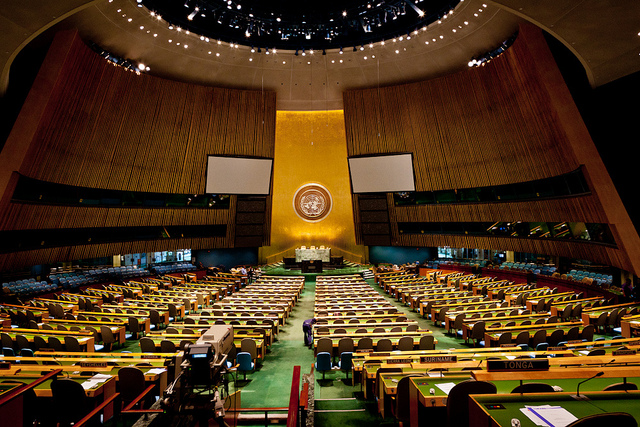IIGCC BLOG

How green are your govvies? Carbon footprinting for sovereign bond portfolios
Daniel Ingram, Head of Responsible Investment at BT Pension Scheme (Twitter @Daniel1ngram)
“Carbon footprinting”, namely accounting of emissions that can be attributed to an investment portfolio, has become the go-to method for investors wanting to assess their contribution and exposure to climate change. It’s easy to see why footprinting is such a success story – the calculation is simple, intuitive and regulators are pushing investors down this route, albeit sometimes inadvertently (e.g France’s article 173). But as we all know there are still a number of major unresolved problems with footprinting: it’s backward-looking and offers limited insight into supply chain emissions.
But stepping back a bit, there are some pretty fundamental questions still to answer: “What specific aspects of climate change risk are we trying to measure? What does footprinting tell us, if anything, about the speed and scale of a country’s energy transition, the magnitude and location of potential asset stranding and which of our assets are most exposed/resilient to future physical impacts from climate change? Is it feasible or even helpful to footprint all of our assets including unlisted and sovereign debt? For more detail see Kepler Cheuvreux’s “Carbon Compass” (Nov 2015) and Q&A report (March 2016).
Part of the problem is that we can’t simply replicate footprinting method used say for public equity. For that asset class we sum the total emissions of our share of a company’s total market capitalization (the “ownership” approach). This help us measure the total present volume of emissions we’re financing and our potential exposure to carbon price changes. But as sovereign bond investors we’re not necessarily directly financing a country’s emissions by buying its debt. Also this method doesn’t tell us anything about a country’s mitigation plan or adaptation measures and it doesn’t help us compare across countries.
Another option is to look at the total emissions of the government issuing the debt but what does this tell us about the risks faced by the sovereign such as extreme weather events impacting GDP? Other methodologies look at footprinting the total carbon consumed per capita or production activities within the nation’s borders.
To help address some of these unresolved methodological questions you may be relieved to hear we’ve formed a small investor working group, convened by the Global Footprint Network @EndOvershoot and @southpolegroup and we’re hoping to publish a short paper on the topic to be launched in the Autumn of 2016.
Carbon footprinting aside, what’s really encouraging is the growing body of research investors can use to help understand climate risk exposure in sovereign debt. In the “Heat is On: How Climate Change Can Impact Sovereign Bond Ratings”, S&P concluded the ratings of some Southeast Asian sovereigns could come under pressure as a result of rising sea levels and more frequent and severe weather patterns. In ERISC Phase II @UNEP_FI we’ve got better insight into how food prices link environmental constraints to sovereign credit risk.
So we’ve got plenty of research out there to help us begin to at least ask the question, “How green are your govvies?”
ICYMI: French Energy Transition Law; Global Investor Briefing by @PRI_News @IIGCCnews https://t.co/0bGu6wlHLN pic.twitter.com/oJeXa2ALP1— IIGCC (@IIGCCnews) June 13, 2016
IIGCC’s Carbon Compass: Investor guide to carbon footprinting | IIGCC https://t.co/8BwOs9CZLp via @sharethis @IIGCCNews #climatechange— Donald MacDonald (@DonaldMacDona18) November 23, 2015
Identifying environmental risks crucial 2 investing-equities & sovereign bonds-@SusanBurns99 https://t.co/Rx0vIN8EMQ pic.twitter.com/v0MHe1l4Qu
— Footprint Network (@EndOvershoot) May 20, 2016

Developing investment beliefs, writing a climate policy and convincing your board to take action !
Jennifer Anderson, Responsible Investment Officer at The Pensions Trust
What can Europe’s Leading Pension Funds tell us about climate change governance? This was the subject of IIGCC’s recent Climate Solutions programme workshop where we explored how to develop a climate change policy and secure buy-in from your board to implement it. I was joined by Daniel Ingram from BTPS and Karianne Lancee from Unilever to share experiences from this process.
IIGCC’s Climate Change Investment Solutions Guide recommends embedding climate change into the investment governance structure through: Inclusion of climate change in the statement of investment beliefs, in the investment policy and through setting of targets that are actionable and transparent.
I wanted to investigate what kind of language, values, strategies and targets were used to make up climate change policies in some leading pension funds. Referring to the 2016 ranking for by the Asset Owners Disclosure Project (AODP), I wasn’t surprised to see IIGCC members making up 7 of the 10 top-rated funds.
Making reference to climate change in your beliefs is a powerful and important way to start. It is clear this group of pension funds all make very clear reference at a top level to sustainability in their beliefs and clearly link this to the material risks and opportunities that tie climate change to long term risk and performance. Most have also updated recently, with clear targets for a 5 year forward horizon to 2020.
Each scheme has gone about this slightly differently to reflect their context, sponsor, regulatory environment and the focus of their beneficiaries. My colleagues agreed that there were challenges to keep climate change on the agenda when there are so many issues facing pension funds as alongside the persistent challenge to measure and analyse climate risk within portfolios.
Key takeaways from the workshop were that to get started it’s helpful to invite external speakers to address your investment committee and to set up a sub-committee on climate change. It’s also important to think in terms of how a portfolio would perform under different scenarios and then try to assign probabilities or pick a scenario that the scheme has ascribed to under its beliefs. In today’s world pension funds must understand how the valuations of high carbon assets will be impacted in a low carbon future scenario.
With IIGCC’s focus now on implementation of climate polices and investment practices, I look forward to more practical discussions through IIGCC’s Climate Solutions programme. The next workshop on 16th June is on climate and sovereign ratings and other workshops later in the year on will address carbon risk in passive portfolios and increasing exposure to low carbon investments.
BLOG - news and commentary from @IIGCCnews‘s AGM on 17 May https://t.co/9oGmK8gbzQ pic.twitter.com/2fVSmO0OCK
— IIGCC (@IIGCCnews) May 18, 2016
ICYMI Congrats to top 10 funds in #AODP500 2016 #climaterisk leader rankings. 7 were @IIGCCnews members. #ERIN2016 pic.twitter.com/lKV7qzG16w
— IIGCC (@IIGCCnews) June 9, 2016
18th May 2016 03:30:00 PM (UTC)

Over 45 IIGCC members from 6 countries attended our AGM in London on Tuesday 17 May. Chief Executive Stephanie Pfeifer began the meeting by celebrating the Paris Agreement and the key components which were agreed by governments that deliver a strong signal that the low carbon transition is inevitable. There is now great momentum in the investor community to address climate change investment processes and decision-making and IIGCC’s membership growth is testament to that.
The membership also voted in favour of appointing a new board member, Meryam Omi from Legal and General Asset Management, whilst also confirming the re-election of Phlippe Desfossés, CEO at ERAFP – the French Public Service Additional Pension Scheme.
Echoing comments made by UNFCCC chief Christiana Figueres at the start of further climate negotiations in Bonn this week, Stephanie stressed that IIGCC’s focus across all its programmes is now moving to implementation – both of country and EU level policy as well as of investment solutions.
IIGCC will continue to be the investor voice on investable policy in the EU and to the G20, building a strong relationship with the German presidency. Stephanie also explained how IIGCC is feeding in to the G20 Taskforce for Climate-related Financial Risk Disclosure (TCFD). There were presentations from members on pension fund climate policies, IIGCC’s corporate engagement programme, energy efficiency and activity to drive stronger climate action across the property sector.
In a panel held under the Chatham House Rule a lively debate took place about IIGCC’s EU company lobbying initiative. A presentation about ongoing research from Ben Fagan-Watson of the Policy Studies Institute was followed by reactions from guests who’ve worked in Brussels lobbying on behalf of a major corporate client and for a trade association. The ensuing discussion was full of insights about how companies and trade associations develop and evolve their public policy positions and why certain sectors seem to have more power than others. There is cause for significant investor concern that many of the companies contacted by IIGCC members don’t have a public view on a 2 degree pathway. Equally, there are encouraging signs that many companies are making efforts to ensure their trade associations’ positions become more progressive on climate change issues.
In summary: Change is possible, albeit with an uphill battle, and expectations from investors will be crucial to help drive further progress in aligning industry lobbying with the low carbon transition.
Full results of the research being completed for IIGCC in this area will be published later this year.
Congratulations to Meryam Omi @landg_group and Phlippe Desfossés @ERAFP for election on 17 May to the board of IIGCC pic.twitter.com/Ujc83IqBtx
— IIGCC (@IIGCCnews) May 18, 2016
Great turn out today for @IIGCCnews AGM for a discussion on lobbying. Here’s @StephanieCMaier talking engagement. pic.twitter.com/9aqvvOzVE7
— IIGCC (@IIGCCnews) May 17, 2016
21st April 2016 01:30:00 PM (UTC)

Last week IIGCC together with six other partner investor networks sent a joint letter to the Heads of State and Governments of the world’s 21 largest economies including many of the world’s largest emitters of greenhouse gases. We were encouraged that on the same day we published the letter Canadian Prime Minister Justin Trudeau responded saying that he intended to work energetically with other key governments to bring the Paris Agreement into force earlier than envisaged.
Tomorrow over 167+ countries and the EU are expected to sign the Paris Agreement at the ceremony being hosted by the United Nations Secretary General in New York. While the immense political commitment this event will harness is beyond question, as Christiana Figueres, UNFCCC’s outstanding leader, has also said on many occasions since last December, the hard work begins now.
Against that backdrop one question on the mind of many institutional investors is when will the full impact of the Paris Agreement become visible to them? The need for far better company disclosure and 2°C stress testing is already provoking more investors than ever before to table climate-related shareholder resolutions during this year’s proxy season. However, most investors suspect the effects of the Paris Agreement will only become fully visible once it has been translated through policies and measures into regional or national policy frameworks and once they can see the full impact for each country and every company.
While the direction of travel has been firmly established by the unequivocal signal given to the investment community in Paris, the impact of the Agreement on the value of individual companies assigned by the financial markets may take longer to emerge. The main uncertainty for investors is not whether the Paris Agreement gets implemented but how companies fare through the process.
Prudent investors are already working – as a natural extension of their fiduciary duty - in a determined way to anticipate the changes that are bound to follow from the effective implementation of the Paris Agreement.
Recent history suggests an interesting lesson: when the European Union adopted its 2020 energy and climate framework in 2007 it took some time for the value of the utilities sector to fall. The full consequences for big utility companies only became visible years later when power suppliers valued highly in 2007/8 ended up far below the prime position they once enjoyed in major equity indices, due to a variety of reasons, including the technological changes accelerated by the 2020 framework.
Investors can’t fully predict how well or how rapidly companies will prove themselves able to respond to the risks and opportunities that will follow from implementation of the Paris Agreement. The way companies position themselves will certainly determine whether they win or lose from the low carbon energy transition now firmly underway. The way investors engage with companies will in turn impact corporate strategy and how their plans are evaluated for investment purposes.
7 groups (w/ 400 investors & $24 Trn AUM) urge world leaders to sign #ParisAgreement rapidly https://t.co/EFXoRqhhml pic.twitter.com/H1gdx6IL7m
— IIGCC (@IIGCCnews) April 19, 2016
13th April 2016 02:45:00 PM (UTC)
Three investor networks write to the FSB climate disclosure task force
Last week, the London School of Economics demonstrated that limiting global warming to 2 degrees centigrade would put USD 800 billion less value at risk by 2100 than a 2.5 degrees scenario. The integration of climate risk into frameworks to enhance financial stability is making progress, as countries across the G20 analyse, assess and in some instances legislate to ensure the smooth transition of the financial system to the low-carbon economy that the Paris agreement has made binding. Almost all G20 countries have already begun taking steps to enhance financial regulation with regard to climate risk, most prominently through requiring better disclosure of climate risk by companies.
The FSB industry-led task force on climate-related financial disclosures (TCFD) is the most prominent initiative underway to improve the climate resilience of the financial system. Ahead of the publication of the TCFD’s phase I report - which outlines the scope of work the Task Force will undertake - IIGCC joined forces with two other investor network - INCR (US) and IGCC (Australasia) – to send a joint letter to the Task Force.
In particular, the investor networks recommended:
1. Companies adopt a climate risk management and disclosure approach, which combines quantitative and narrative reporting about exposures and risk mitigation strategies. In particular, we suggest a 5-part framework covering central areas of climate risk, which could form the basis of a disclosure taxonomy for all industries. Investors also argue that whatever framework the Task Force develops, it should ensure that scope I, II and where relevant Scope III emissions will in future be reported.
2. Narrative reporting should have long timescale reflective of investment horizons for relevant sectors and the long-range nature of climate change. This should be forward-looking and risk-based
3. 2 degrees stress-testing will be necessary in those sectors where climate change is expected to have a material impact on operations or assets.
IIGCC and its partner networks believe the TCFD’s work is crucial for improving the ability of the financial system to analyse, process and integrate climate risk information into investment decisions.
Together with its partners IIGCC will therefore also feed into the public consultation that the Task Force is running until the end of April. Likewise, IIGCC will make the letter written to TCFD available to EU decision makers since the EU is currently revising its non-financial reporting directive and actively looking for inputs to that process.
.@iigccnews welcomes first @FSB_TCFD report's focus on more standardised disclosures #climate #finance #economics https://t.co/vDuD6FMsky— IIGCC (@IIGCCnews) April 5, 2016

